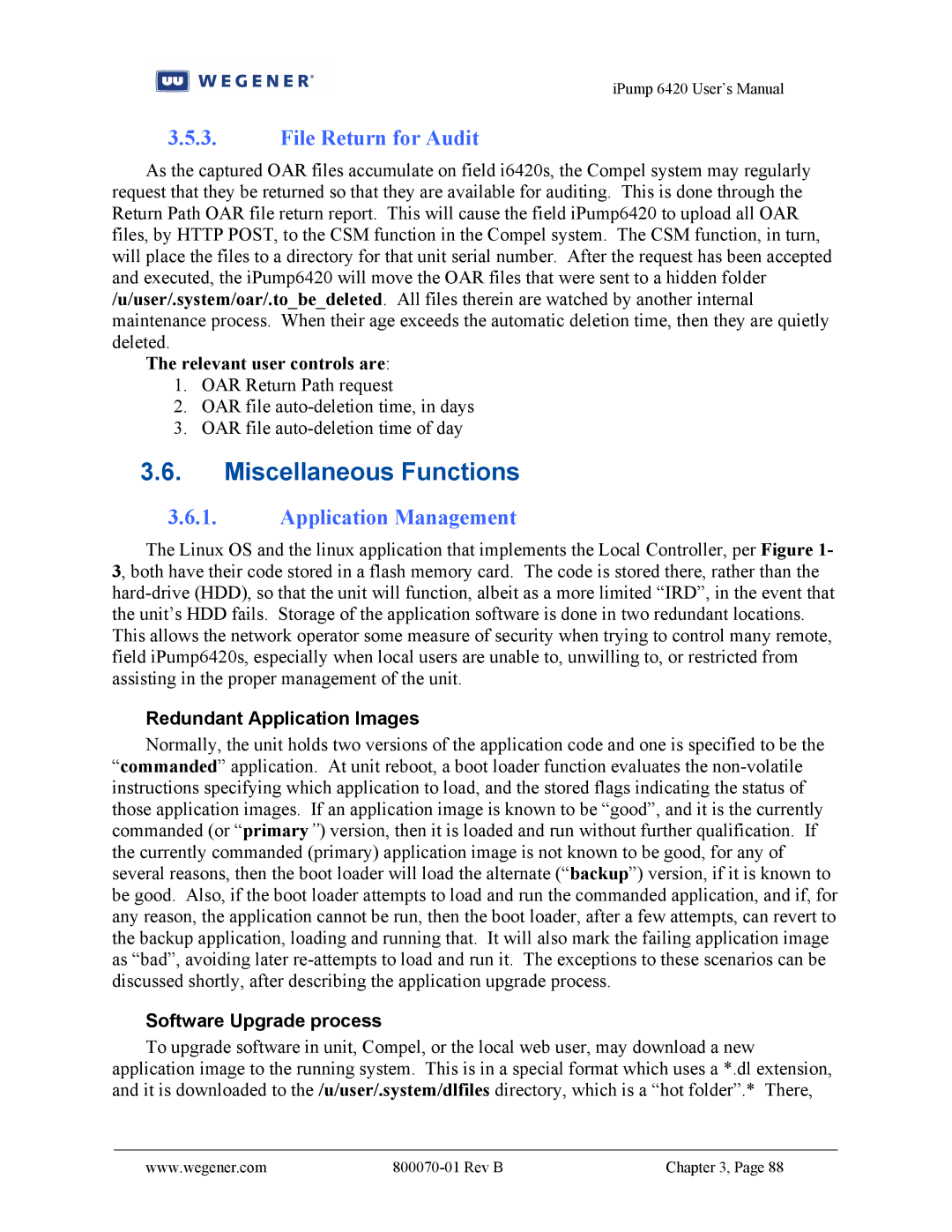
iPump 6420 User’s Manual
3.5.3.File Return for Audit
As the captured OAR files accumulate on field i6420s, the Compel system may regularly request that they be returned so that they are available for auditing. This is done through the Return Path OAR file return report. This will cause the field iPump6420 to upload all OAR files, by HTTP POST, to the CSM function in the Compel system. The CSM function, in turn, will place the files to a directory for that unit serial number. After the request has been accepted and executed, the iPump6420 will move the OAR files that were sent to a hidden folder /u/user/.system/oar/.to_be_deleted. All files therein are watched by another internal maintenance process. When their age exceeds the automatic deletion time, then they are quietly deleted.
The relevant user controls are:
1.OAR Return Path request
2.OAR file
3.OAR file
3.6.Miscellaneous Functions
3.6.1.Application Management
The Linux OS and the linux application that implements the Local Controller, per Figure 1- 3, both have their code stored in a flash memory card. The code is stored there, rather than the
Redundant Application Images
Normally, the unit holds two versions of the application code and one is specified to be the “commanded” application. At unit reboot, a boot loader function evaluates the
Software Upgrade process
To upgrade software in unit, Compel, or the local web user, may download a new application image to the running system. This is in a special format which uses a *.dl extension, and it is downloaded to the /u/user/.system/dlfiles directory, which is a “hot folder”.* There,
www.wegener.com |
| Chapter 3, Page 88 |
